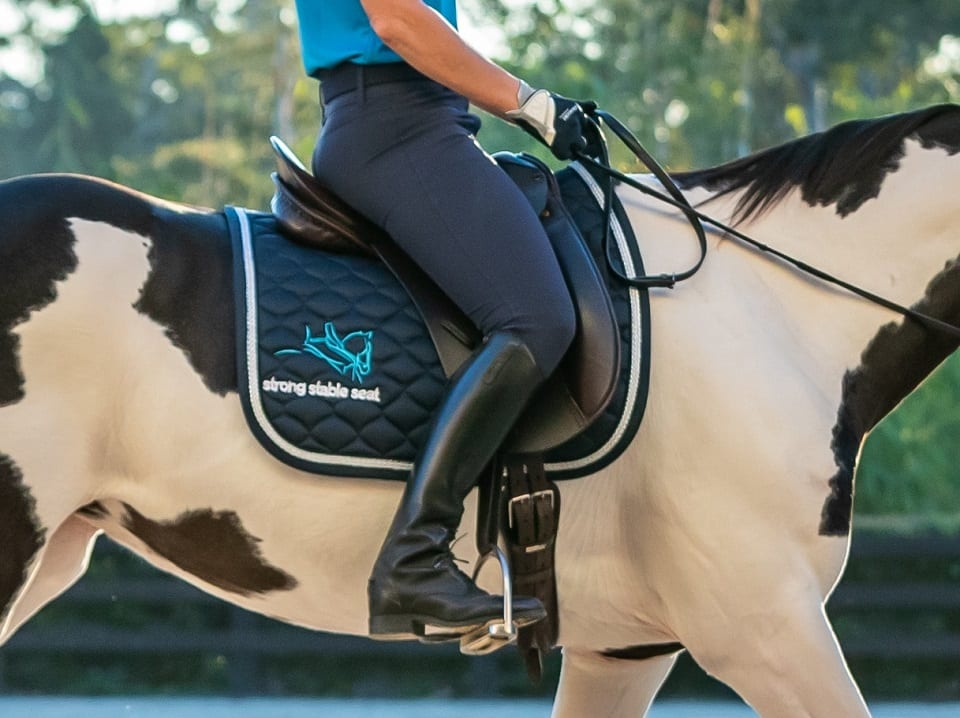Does your saddle slip to the side, or maybe you tend to lose one stirrup frequently?
The saddle slipping to the side can be caused from numerous issues such as an incorrectly fitting saddle, or asymmetry in your horses back. So, for this blog I am assuming that you have firstly had a qualified saddle fitter assess and fit your saddle to your horse to rule out that issue. It is interesting to note that frequently a horses’ spinal asymmetry can be attributed to rider asymmetry as the horse adapts its posture to find his balance with the rider.
For now, we are looking at rider asymmetry causing the saddle to slip sideways.
None of us carry our weight entirely evenly between our left and right feet, and where our weight is distributed whilst standing also translates to how our weight is distributed when we ride. If you carry more weight on one side compared to the other, even with a correctly fitted saddle, your saddle could still slip especially if your horse tends to be round with a small wither.
Take note of how you stand when you are relaxed – do you tend to stand with more weight on one foot compared to the other, especially when standing still for a length of time? If you have had children, what hip did you hold your child on most frequently? What hand do you usually carry the groceries, or feed and water buckets? If you kicked a ball, which leg would you stand on and which leg would you use for kicking? If you jumped a puddle, which leg would you take off with? All of these suggest which is your most dominant weight carrying side.
Usually your dominant weight carrying leg on the ground will also be your dominant weight carrying leg whilst riding.
Try this simple exercise to assist with re-distributing your weight whilst riding:
Step 1. Ensure your saddle is correctly positioned and straight on your horse and use a mounting block rather than your stirrup to keep your saddle in place.
Step 2. Take up your stirrups, and check that your belly button is directly in line with the middle of your pommel. Ask someone to stand behind and assess that the middle of your buttocks and back is aligned with the centre of the cantle.
Step 3. Commence to walk in a straight line, taking notice of what it feels like to be sitting straight. What differences do you notice?
Step 4. From a halt, reposition yourself to become straight using Step 1 and 2, then take the stirrup away from your dominant leg (the side the saddle slips to). When you are ready, proceed to walk firstly in straight lines, taking time to notice the difference in your body and being aware when you begin to slip off centre. As you progress, begin walking 20m circles in each direction keeping your body centred on the saddle.
It takes time to address old habits, however repeating this exercise frequently, and then progressing to the trot and canter will assist in improving your body awareness and even weight distribution.



